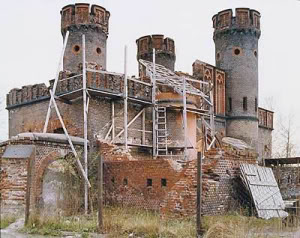-
The Storyteller at iCI
by Sarah Stephenson February 8, 2010

Storytelling has been bound up with human understanding since the origins of myth and oral history. During the earliest recorded centuries, minstrels and bards told stories in order to instill a certain moral code in their listeners. Over time, and as writing became more commonplace, narrative evolved into various forms, with tales often turning into a mimetic reflection of reality rather than simple portraits of an idealized society. A similar paradigm shift can also be seen in the documenting of events, people, places and objects as we enter an age where the evolution of recording media is continuing to pick up speed. Considering this relationship, between storytelling with documentation, is the main focus of the iCI’s current exhibition at the unexpectedly successful setting of Parsons New School for Design exhibition space. Through a variety of unique, and at times subversive methods, the works walk a fine line between historical fiction and journalistic correspondence: they do not dismiss the facts of a given event, but neither do they cling to a vision of documentary truth. Instead, the emphasis is placed on reconstructing the material in an alternative manner so it can be comprehended in an unanticipated light.
The Kant Walks by Joachim Koester meets visitors inside the entryway, consisting of seven photographs depicting different locations in Kaliningrad. Koester’s extended wall text explains that the images trace Kant’s daily walk through his home city — Königsberg in the German — one of the philosopher’s few outdoor activities during his otherwise solitary existence. The photographs themselves take us through a cold Eastern European landscape with monuments from various eras encountered along the way: from medieval ruins, through Communist housing blocks to contemporary high-rises. This living encounter evocatively brings together Kant’s routine, Koester’s investigation, and the history of the landscape in between.

Two further artists investigate the combination of the mundane and the communal during a time of war. In Lamia Joreige’s piece Objects of War from 2006, interviewees discuss an object which represented their personal experience of the Lebanese War, in many cases something as simple as a radio or a key. Brought together, these items detail the shared experiences of many through the everyday. Daily life is also the focal point of Steve Mumford’s twelve watercolor sketches; in one, Mumford captures “Iraqi contractors waiting to be paid on a Friday morning FOB Thunder, March 2004″ while another depicts street trading as usual.
Ryan Gander’s installation As Time Elapsed from 2005 features 31 copies of the book “The Boy Who Always Looked Up”. The story revolves around a boy living in Ernö Goldfinger’s infamous Trellick Tower in London, renowned for its intense social problems following its construction in the 70′s. The boy, who tells the story of the architect’s death, paints a bleak picture of failed aspirations and the difficulties of urban planning. In Gander’s installation the books are placed on a high shelf, forcing the viewer to look up and physicalizing the book’s utopian sensibility. Fantasies also surround Cao Fei’s video installation, in which the artist asked three employees of a light bulb factory in Guangdong to perform their ideal occupation. Although the three workers let their imaginations run free — we see a fairy-tale moment of a ballet dancer practicing her moves in full regalia — the images are ultimately tragic, set against the context of the factory.

Finally, the film program consists of Jeremy Deller and Mike Figgis’ iconic work, The Battle of Orgreave, a reenactment of a violent clash between striking miners and the British police that marked the beginning of the end of Margaret Thatcher’s regime. A large number of the participants were part of the original skirmish, although some reversed roles. It’s a restaging that comes quite close to a new documentary vision by including interviews and photographic stills.
Part of the show’s success lies in its ability to exhibit established contemporary artists at a venue where they would not normally be shown. The wall texts are informative without being intrusive and allow for an individual reading of each piece. In addition, none of the artworks have a definitive ending; the events they depict are incomplete and, in the process of engaging with and representing them, the artworks in become bound up with their reception. Their import essentially lies in their emphasis on personal, subjective recounting. The points of view on offer are predominantly those of the individuals involved in the event, which is, in most instances, not the artist. However, as with any story, simply retelling it already expands the narrative scope to entangle the storyteller as well.

